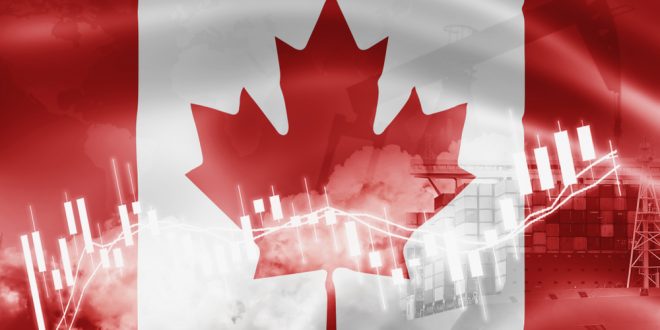The Bank of Canada (BoC) on Wednesday has decided to maintain the main interest rate unchanged at 0.25%
The central bank has also revised downwards its expectations for economic growth this year but raised its growth forecasts for next year.
BoC now expects the Canadian Gross Domestic Product (GDP) will grow by 6.0% in 2021, down from its previous forecast of 6.5%.
This seems to be mostly attributed to the third wave of the coronavirus pandemic, which slowed growth during the second quarter of the year. “However, falling COVID-19 cases, progress on vaccinations, and easing containment restrictions all point to a strong pickup in the second half of this year,” the BoC explained.
As for next year, the central bank now expects a growth rate of 4.6% in 2022, compared with an earlier estimate of 3.7%, followed by a 3.25% growth in 2023.
The BoC acknowledged the improvement in economic conditions, both locally and globally.
Accordingly, the bank decided to reduce its weekly asset purchases to CAD 2 billion from CAD 3 billion.
The changes within the bank’s quantitative easing (QE) program reflect the continued progress towards recovery and the increased confidence in the strength of the Canadian economic outlook, according to the policy statement.
Maintaining the asset purchases come with the aim to maintain the low rates on mortgages and business loans, to stimulate recovery.
Moreover, the Bank of Canada expects inflation to run above 3% for the rest of 2021, due to higher gasoline prices and recovering demand leading to service businesses raising prices.
The higher energy prices are seen by the Canadian monetary policymakers as a mostly positive sign of the global economic recovery, noting that rising demand is supporting higher oil prices, while non-energy commodity prices remain elevated.
In 2022, inflation is expected to register 2%.
“The factors pushing up inflation are transitory, but their persistence and magnitude are uncertain and will be monitored closely,” the bank stated.
The current interest rates are expected to be kept in place until the economic slack is absorbed so that the 2% inflation target is sustainably achieved, which the BoC expects sometime in the second half of 2022.
 Noor Trends News, Technical Analysis, Educational Tools and Recommendations
Noor Trends News, Technical Analysis, Educational Tools and Recommendations





